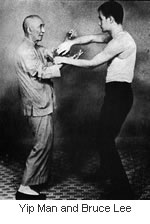Ben Underwood lives with his family in the suburbs of Sacramento, California where he attends his local high school. Like any other 14-year-old boy, he loves to play with his friends and chat to girls his age, with whom he seems popular. He looks like any other boy, until he removes his $4,600, hand-crafted eyes. Ben is blind and, like other blind people, relies on some specialist equipment to survive. He uses talking computer software and a Braille machine to help with his homework.
Ben does not have a guide dog, uses no stick, and does not even use his hands to aid his mobility. Instead, he has developed something of a super sense: he is the only person in the world who navigates using clicks. As he walks, he makes a continuous clicking noise with his tongue. As these clicks echo around him, he is able to draw up a detailed mental plan of his surroundings and adjust his direction accordingly.
So accurate is his technique that he is even able to go rollerblading on the street, negotiating narrow gaps between parked cars that even sighted children might find challenging. In fact, Ben’s mother, Aquanetta, inds that her son is far more attentive to the dangers of the road than his friends, always the first to move onto the pavement when a car approaches.
Ben first noticed his talent at the age of seven, when at summer camp. While it began as just a habit, Ben explains, he soon realised that it had potential benefits for navigation. He began to practise every day and developed the system to the point it is at today. It is the fact that Ben is entirely self-taught that is perhaps most astonishing and has led people to use the term ‘genius’ when referring to the boy. (Excerpt from demand.five.tv)
Courtesy: topdocumentaryfilms.com/
Ben does not have a guide dog, uses no stick, and does not even use his hands to aid his mobility. Instead, he has developed something of a super sense: he is the only person in the world who navigates using clicks. As he walks, he makes a continuous clicking noise with his tongue. As these clicks echo around him, he is able to draw up a detailed mental plan of his surroundings and adjust his direction accordingly.
So accurate is his technique that he is even able to go rollerblading on the street, negotiating narrow gaps between parked cars that even sighted children might find challenging. In fact, Ben’s mother, Aquanetta, inds that her son is far more attentive to the dangers of the road than his friends, always the first to move onto the pavement when a car approaches.
Ben first noticed his talent at the age of seven, when at summer camp. While it began as just a habit, Ben explains, he soon realised that it had potential benefits for navigation. He began to practise every day and developed the system to the point it is at today. It is the fact that Ben is entirely self-taught that is perhaps most astonishing and has led people to use the term ‘genius’ when referring to the boy. (Excerpt from demand.five.tv)
Courtesy: topdocumentaryfilms.com/









































